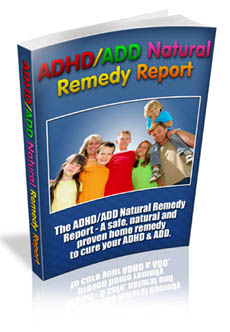What Is Adhd Disease
Millions of children, as well as a large number of adults, are diagnosed with attention deficit and hyperactivity disorders. Although estimates vary from 1 percent to 20 percent, most researchers believe that approximately 8 percent or more of children have this disorder. Today, the vast majority of these children and adults are put on medication as the main feature of their treatment. Some children may also receive special accommodation at school, such as sitting in the front row, and they may participate in many types of behavior management programs to limit impulsive or inappropriate behavior. Unfortunately, such programs rarely address the underlying reasons for a child's difficulties with paying attention, focus, and self-control.
Can children and adults with attention deficit disorder (ADD) and attention deficit/hyperactivity disorder (ADHD) overcome these difficulties without pills? The answer is absolutely yes for the vast majority. The key lies in identifying and treating the problems that underlie each child's or adult's inattentiveness. Many parts of the mind and brain contribute to attention. Each individual has his or her own unique profile. Over the past thirty-five years of clinical practice, I have worked with all age groups affected by ADHD and related disorders from infants, toddlers, and preschoolers to grade schoolers, adolescents, and adults - as well as conducted many research studies. This experience has made it possible to create a program that systematically strengthens the different abilities that contribute to paying attention and enable each of us to regulate ourselves, to focus on problems to be solved, and to follow through. What Is Adhd Disease
From this work, my colleagues and I have developed a new way to think about ADHD. It is not a single disorder like strep throat. Contrary to many current beliefs, it does not involve just one part of the brain or mind. Rather, there are many different roads that lead to the symptoms that we call attention deficit disorders and hyperactivity. For example, because some children are overly reactive to sights, sounds, and other sensations, they become highly distractible, Other children are just the opposite. They crave new sights and sounds as well as touch and, therefore, are constantly on the move, going from one thing to another. Still others are so underreactive to sights, sounds, and sensations in general that they withdraw into their imaginations and, for this reason, appear inattentive. Still other children get "lost in the trees" and have difficulty with visualizing the big picture. Planning and sequencing motor actions are yet another problem area for many children with attentional difficulties.
The ways in which these and other patterns characterize a particular child are at the heart of this new way of thinking about ADHD and ADD. They are also at the heart of the intervention program we have created that tailors the approach to each child and family. Intervention is based on understanding not only the nature of the child's problem with attending and the challenges that develop in daily life and school as a consequence, from infancy through childhood and adolescence, but, more important, how the healthy abilities that make focus and attention possible can be encouraged and strengthened.
The motor and cognitive exercises and activities we have developed can strengthen the mind, and there is mounting evidence that when we strengthen the mind we also strengthen the physical structure and functioning of the brain as well. Unfortunately, at present the roots of attention disorders are rarely fully addressed, Treatments focus only on reducing the outward signs of the disorder.
The Nature of Attention
There are two ways to think about attention. One is that it's a feature of the human nervous system, and either you can pay attention or you can't, and if you can't, you need one of the stimulant medications such as Ritalin or Adderall or Concerta. The other way to think about attention is that it's a learned process with many components. When a baby in the first months of life turns toward Mommy's voice or looks at Daddy's face and gives a big smile, that's the beginning of attention. When a toddler takes Mommy by the hand to the toy shelf and points up to the bear she wants, that's an active, practical, problem-solving use of attention. When a child is sitting in the classroom listening to the teacher and following her instructions and then raises his hand to ask for an explanation, that's again a very active, dynamic, problem-solving use of attention.
Variations in attention can be expected in early development. As early as two to four months of age, when babies become more capable of turning and focusing to look at Mother's smiling face and listen and coo responsively to Father's happy voice, they can differ in their ability to sustain attention. At eight to twelve months, some may attend only fleetingly rather than in a sustained manner in back-and-forth games such as peek-a-boo or pat-a-cake or when enjoying a shape-sorter game with a parent. What Is Adhd Disease
A two year old might just move from toy to toy and appear highly distracted even when playing with a favorite doll or truck. Later, a young child may always be on the move, always changing "topics," unable to stick with a conversation or a game. Another pattern of inattention involves spurts of attention and then inattention or intermittent stop-and-go interactions. Some children may focus on favorite toys or one-way forms of entertainment (TV, video games, and so on) but find it hard to shift their attention to people, even when their mother or father is calling them.
Sometimes variations in attention can be related to differing motivation, as when young children may be attentive to books, construction sets, or individual projects but less so when they are expected to attend and participate more actively in activities others choose or when there are ground rules, as in "circle time" at school.
Often, the tolerance or expectations of those around them affect whether attention is seen as a problem. For example, a child playing alone for long periods might be considered "independent" and "well behaved" rather than self-absorbed. Adults may think it necessary to change activities every few minutes at preschool or at home because they assume that the attention span is very short in young children. To learn more, you can check out What Is Adhd Disease.


